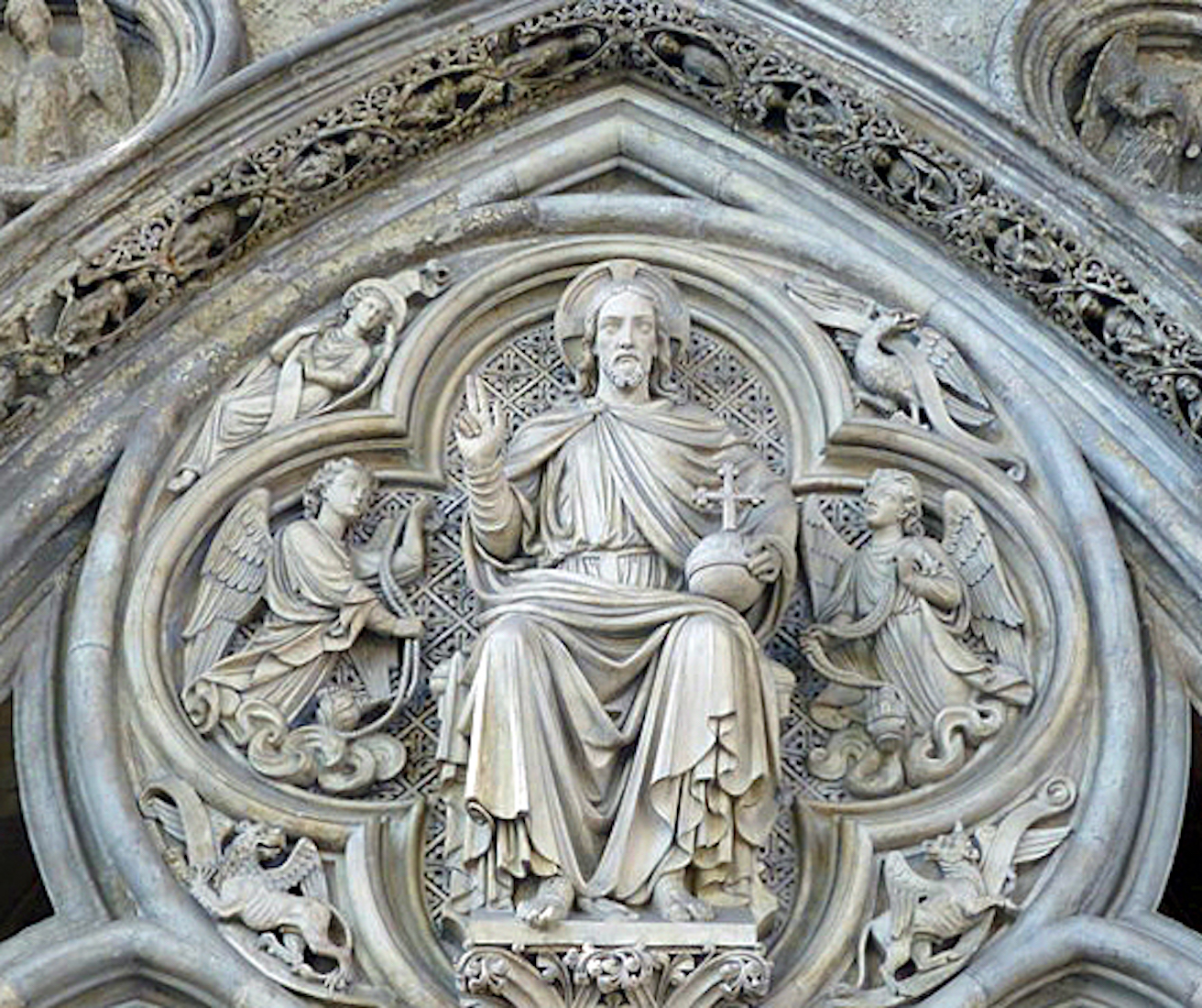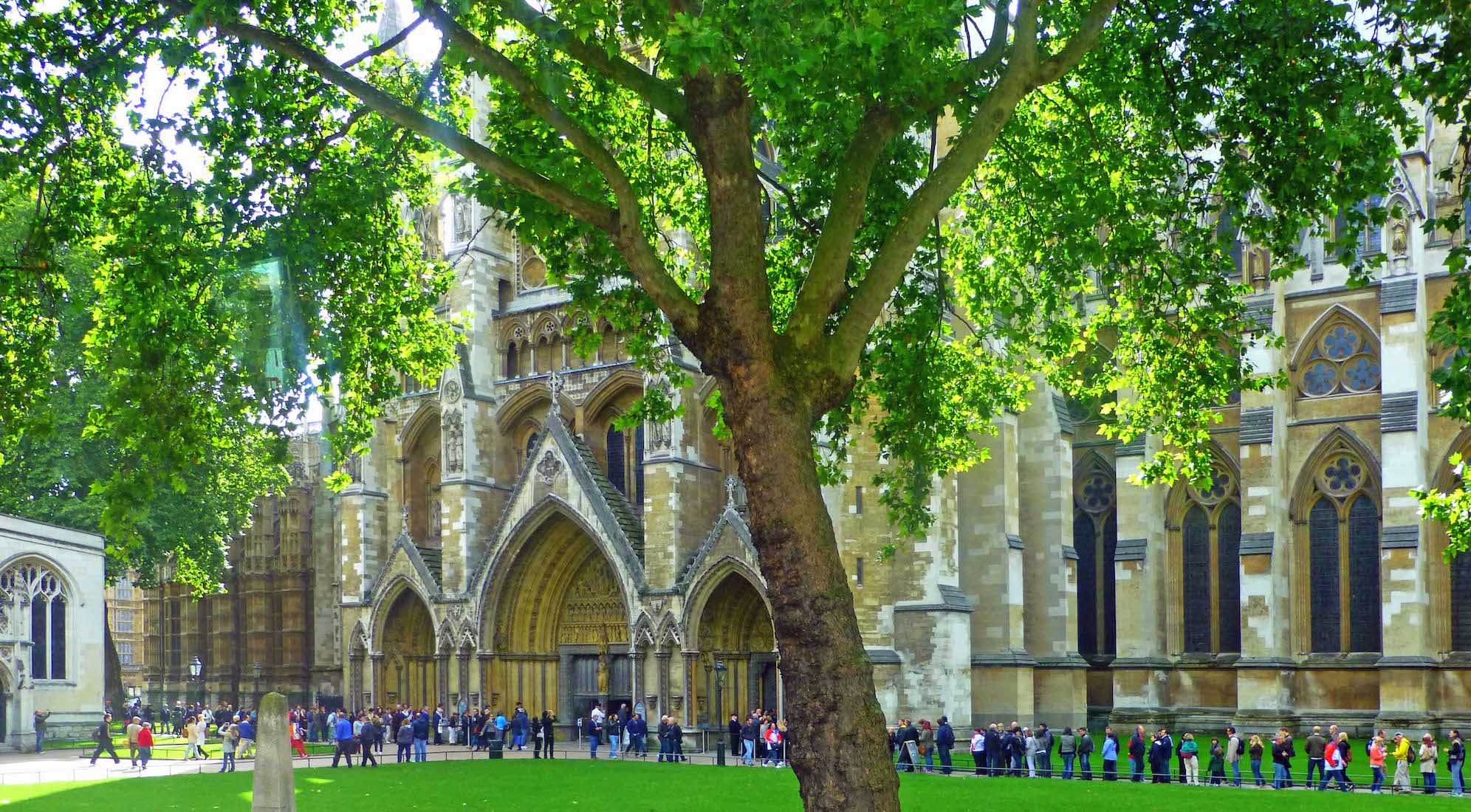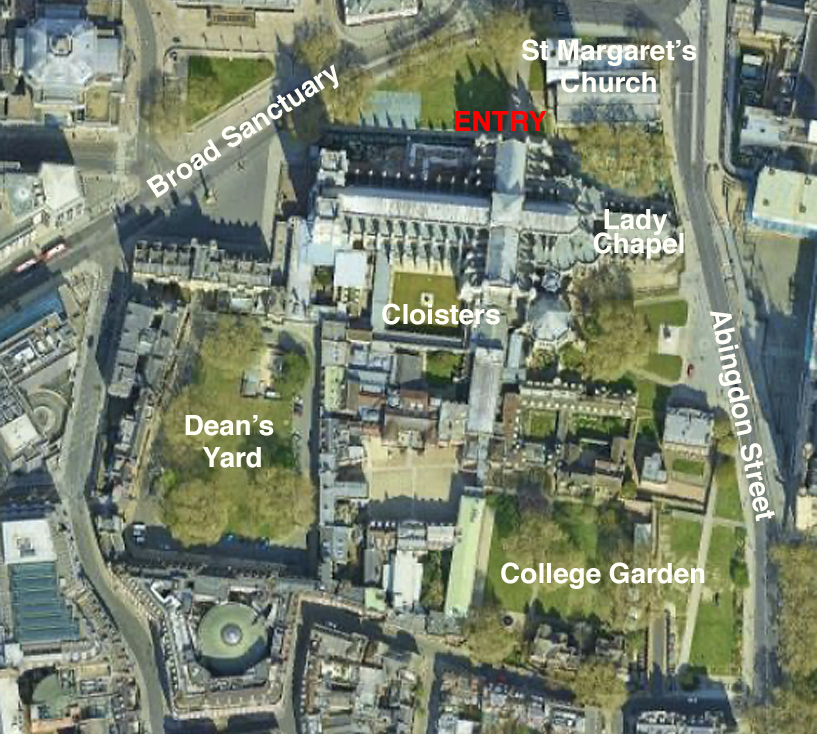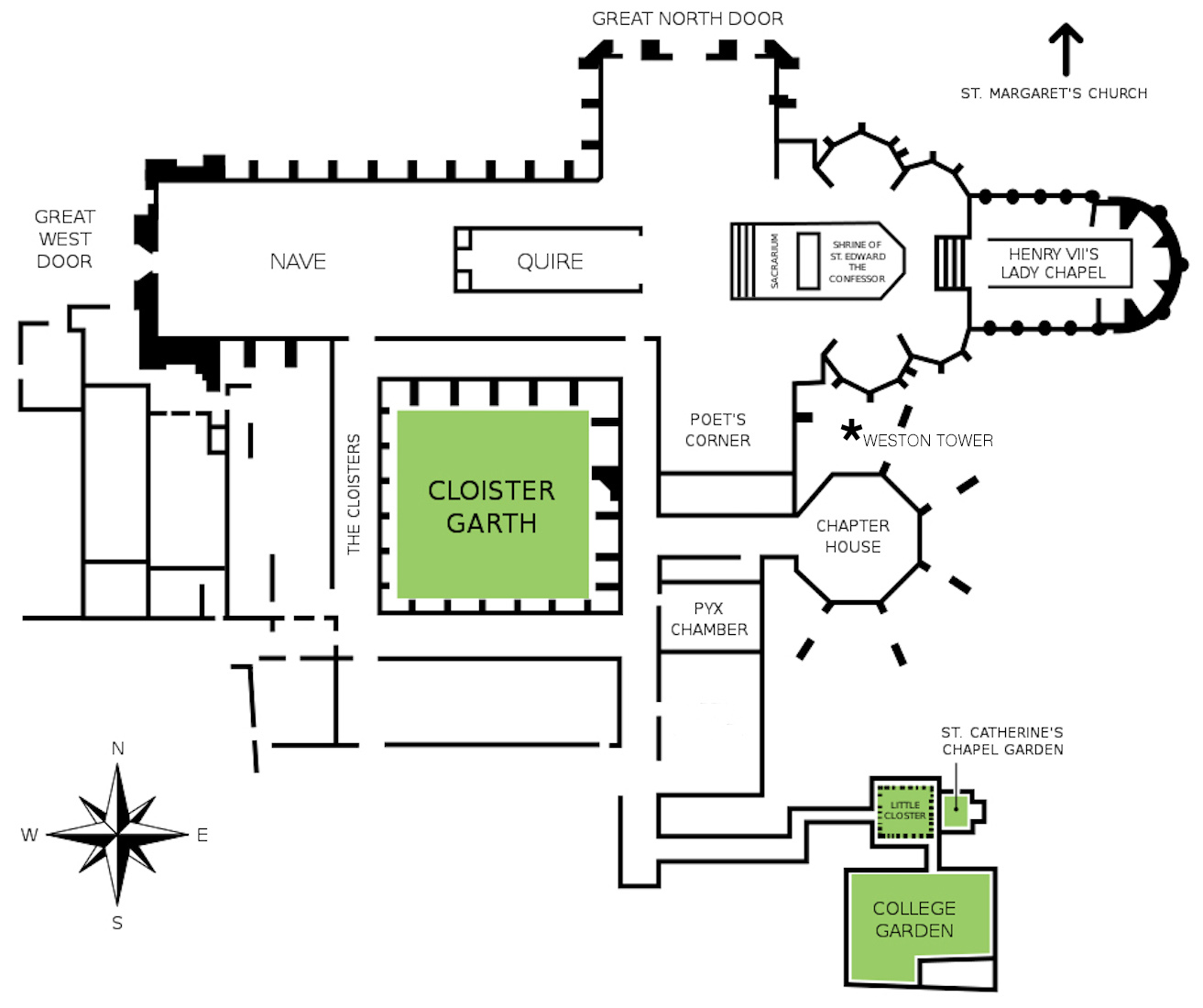WESTMINSTER ABBEY
ENGLAND CHURCH OF ENGLAND
AIDAN McRAE THOMSON PAUL SCOTT

I first visited Westminster Abbey in 1986, long before I became interested in photographing churches and cathedrals, or creating websites. I remember being quite unimpressed, leaving with the thought that ‘the church should be for the living, not for the dead’. Then after viewing the funeral service of Queen Elizabeth II, I wondered whether I had misjudged the Abbey! At the close of this long photographic project, I still have mixed thoughts, and was pleased to discover that I am not alone. Simon Jenkins in his book ‘England’s Cathedrals’ gives the Abbey a ***** rating but makes the following comments. ‘The abbey is a royal peculiar. The abbey is a most eccentric place. The exterior is unspectacular. To the west is the familiar ceremonial church ... to the east is a national mausoleum with some 450 memorials. ...’ And so on. It is certainly a place of great historical interest, and as we visit it together here, we can form our own opinions!
A further complication for this site of English cathedrals, is that Westminster Abbey is technically not a cathedral, although it has been in the past. It is not the home church of a bishop, nor the principal church of a diocese, and has no cathedra.
Nearly all the photographs used here were taken by my friend and working colleague Aidan McRae Thomson. In fact Aidan has taken many other Abbey photographs which are not presented here. His photographs are acknowledged in the text with his initials [AMT], and links to his work are given in the Conclusion. I am grateful to Aidan for his contribution: he has made this website possible! Some other photographs have been included from CCL ‘free to use’ sources. These have been acknowledged in the text. Of these are a number from Google Street View [GSV], and from Wikimedia Commons [WC]. I am very happy to acknowledge these contributions too.
Different locations in the Abbey can be found under the following headings. So it is possible to ‘walk’ right through the Abbey photographically from beginning to end, or to return to this page and visit some special aspect directly by clicking / tapping on one of the following links.
SATELLITE VIEW
This is a satellite view of the Abbey. The Abbey is easy to find, as it is just West of Big Ben and the Houses of Parliament. The axis of the Church is almost exactly due east-west with the sanctuary towards the east, so we can easily identify our liturgical directions (having the sanctuary due East) and geographical directions.
We notice that the Abbey has the traditional cruciform shape with two towers at the Western end. There are six chapels around the Eastern end, including the extended Lady Chapel. At the Northeast corner is the separate St Margaret’s Church, and close by, the Visitors’ Entrance to the Abbey through the North transept doors. Just South of the Church are the green square of the cloisters, the octagonal chapter house, and the small adjacent Weston Tower – more about this later.
As usual, our plan is to first walk right around the outside of the Abbey, although this proves to be difficult! We begin near the door to the North transept (marked ENTRY in red), and walk in an anticlockwise direction to the West end. Here there is a paved triangular area with a standing column, and we find a narrow covered way through to the interesting Dean’s Yard. An archway in the Northeast corner next leads us to the cloisters with many plaques, and then through to the chapter house. Following the South transept extension South, we find the Pyx Chamber, the little Old Cloisters, and St Catherine’s Chapel Garden, finally emerging out into the College Gardens. Quite an adventure! Our route is now simpler, following up Abingdon Street past the George V statue, the Abbey Lady Chapel, and around St Margaret’s Church. We can then enter the Abbey through the North transept doors.
PLAN
This plan of the Abbey Church and near surrounds makes part of our previously explained outside adventure clearer. Inside, although we enter through the North transept door, we shall start our investigation at the West door. We explore in turn the nave, the quire, the North transept, the South transept including the famous Poets’ Corner, the sanctuary and surrounding smaller chapels, the Lady Chapel, and finally the triforium.
HISTORY
[Wikipedia]
Westminster Abbey, formally titled the Collegiate Church of Saint Peter at Westminster, is a large, mainly Gothic abbey church in the City of Westminster, London, England, just to the west of the Palace of Westminster. It is one of the United Kingdom’s most notable religious buildings and a burial site for English and, later, British monarchs. Since the coronation of William the Conqueror in 1066, all coronations of English and British monarchs have occurred in Westminster Abbey. Sixteen royal weddings have occurred at the abbey since 1100.
According to a tradition first reported by Sulcard in about 1080, a church was founded at the site (then known as Thorney Island) in the seventh century, at the time of Mellitus, Bishop of London. Construction of the present church began in 1245 on the orders of Henry III.
The church was originally part of a Catholic Benedictine abbey, which was dissolved in 1539. It then served as the cathedral of the Diocese of Westminster until 1550, then as a second cathedral of the Diocese of London until 1556. The abbey was restored to the Benedictines by Mary I in 1556, then in 1559 made a royal peculiar—a church responsible directly to the sovereign—by Elizabeth I.
The abbey is the burial site of more than 3,300 people, usually of prominence in British history: at least 16 monarchs, eight prime ministers, poets laureate, actors, scientists, military leaders, and the Unknown Warrior.
A further long and detailed history of the Abbey can be found at the link
https://en.wikipedia.org/wiki/Westminster_Abbey





